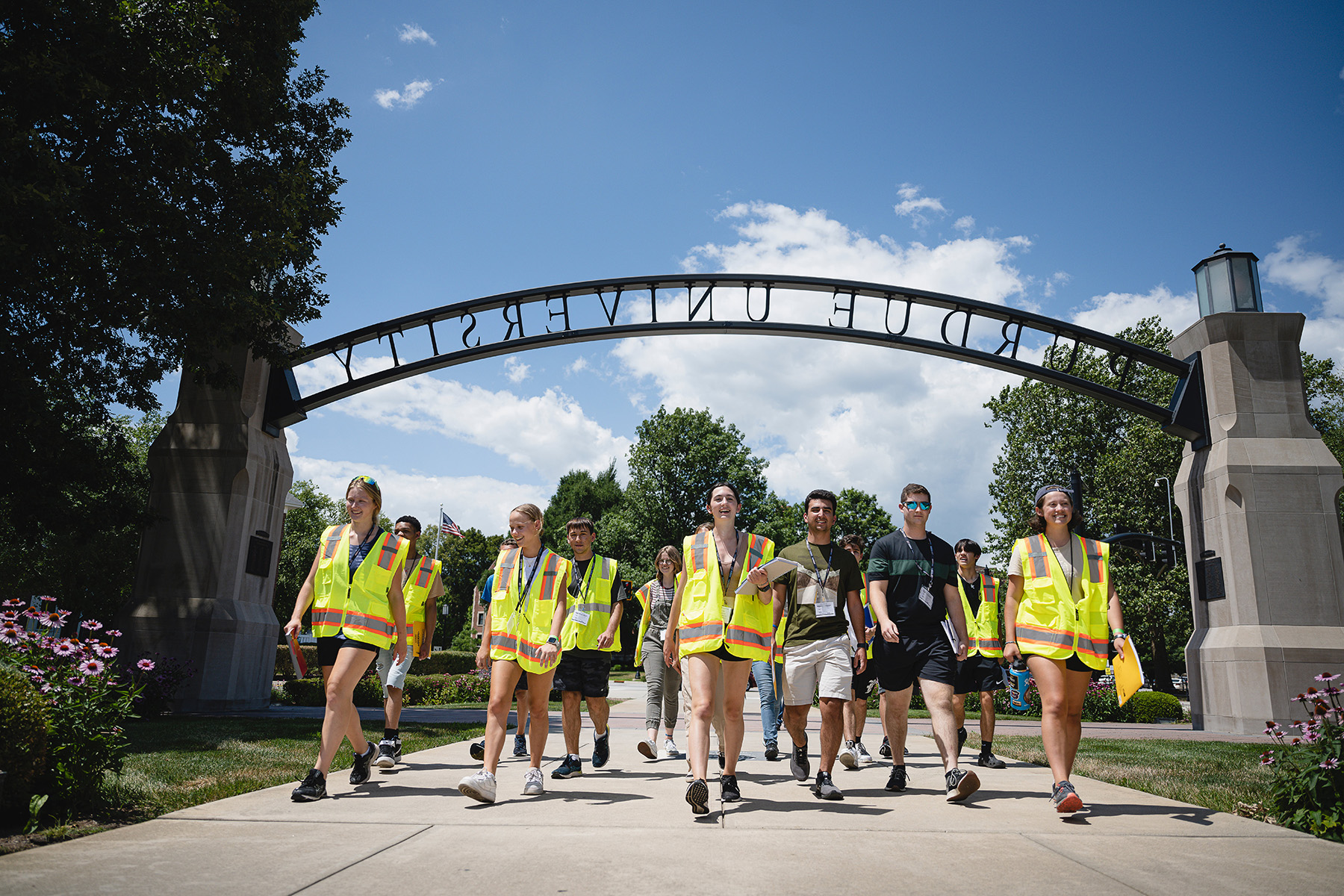
Edited by Margaret M. Mitchell
José Capa Salinas, S.M.ASCE is a Ph.D. candidate in the Lyles School of Civil Engineering at Purdue University in West Lafayette, Indiana. He, along with several instructors, teaches CE 299 — Developing Tomorrow’s Infrastructure: An Introduction to Civil Engineering.
It is a one-week summer course for high school students that integrates the engineering design process, creativity, and innovation. Along with learning civil engineering basics, students have the chance to experience life on a college campus.

Capa Salinas’ research interests include structural health monitoring, infrastructure inspection, drone inspection, machine learning in engineering, and earthquake engineering. He merges this expertise into the curriculum to create memorable experiences for the students.
Capa Salinas discusses the experiential learning course with Civil Engineering.
Briefly describe CE 299 — Developing Tomorrow’s Infrastructure: An Introduction to Civil Engineering.
CE 299 introduces pre-college students to civil engineering content through a variety of hands-on activities carried out in a university setting. Some of the participants have been exposed to civil engineering in high school classes, but many of those experiences have been limited to robotics or 3D computer modeling. This weeklong summer class goes deeper — beyond buildings and bridges — to explore insights into the civil engineering profession and learn introductory civil engineering content.
For most of our students, this class is their first interaction with college life. While at Purdue, they experience how it is to live on campus, complete assignments toward obtaining one college credit, and make friends from all over the country.
What is innovative about the course? How does it foster interest in civil engineering?
Many aspects of the course bring innovation into the equation, and we use best practices inside and outside the classroom. We take them on scavenger hunts through ASCE/SEI 7-22 Minimum Design Loads and Associated Criteria for Buildings and Other Structures as an in-class activity to find types of specific loads and load combinations, survey and do 3D reconstructions using drones, and crush M&M’s in different mediums to discuss impact loading. We take them on field trips to research facilities. We ask students to work on solving real-world problems and think about how these problems could change in the future.
For instance, students have been tasked with proposing solutions to campus congestion and how to develop a nearby plot of land for campus use or even build habitats on the moon. Students work in groups and get to explore problems that do not have one solution, letting them see how engineering is also inherently creative.
Graduate student instructors on the cutting edge of their research fields teach the students. New instructors bring new expertise, which means our content changes from year to year. Returning instructors also explore various topics within their research areas each year to engage and inspire students to love civil engineering as much as they do. The instructors prepare thoughtful content from scratch, using a backward-design approach (with an emphasis on learning outcomes), and they focus on creating activities that are engaging, relatable, informative, and designed to interest (students) in learning more about the profession.
The instructors receive course credit and funding as scholarships to support their educational expenses for the spring and summer semesters. As the lead instructor, I and the program manager guide them in preparing the material for the course in order to be successful, even if they have never taught before.
How did CE 299 come to fruition?
A fellow collaborator started dreaming up this course in 2019 before I was involved in the program. Susan Khalifah, P.E., S.E., M.ASCE, director of student experience and a lecturer at Purdue, saw an opportunity to engage with prospective students earlier, even before they started thinking about college applications. The school supported this vision by providing initial funding to develop the first short course, which was held in summer 2020. The first year was a great success, and now, after four years, the reasons to offer this summer course have multiplied.
What do you want your legacy to be?
I want to positively impact the lives of others and galvanize the next generation of civil engineers to be passionate about their profession, proud of their work serving their communities, and creative thinkers to address complex issues. I hope to inspire students to enjoy their work as much as I do when conducting research, working in industry, or teaching students in their classrooms.
Margaret M. Mitchell is the editor in chief of Civil Engineering magazine.
This article first appeared in the May/June 2024 issue of Civil Engineering.



